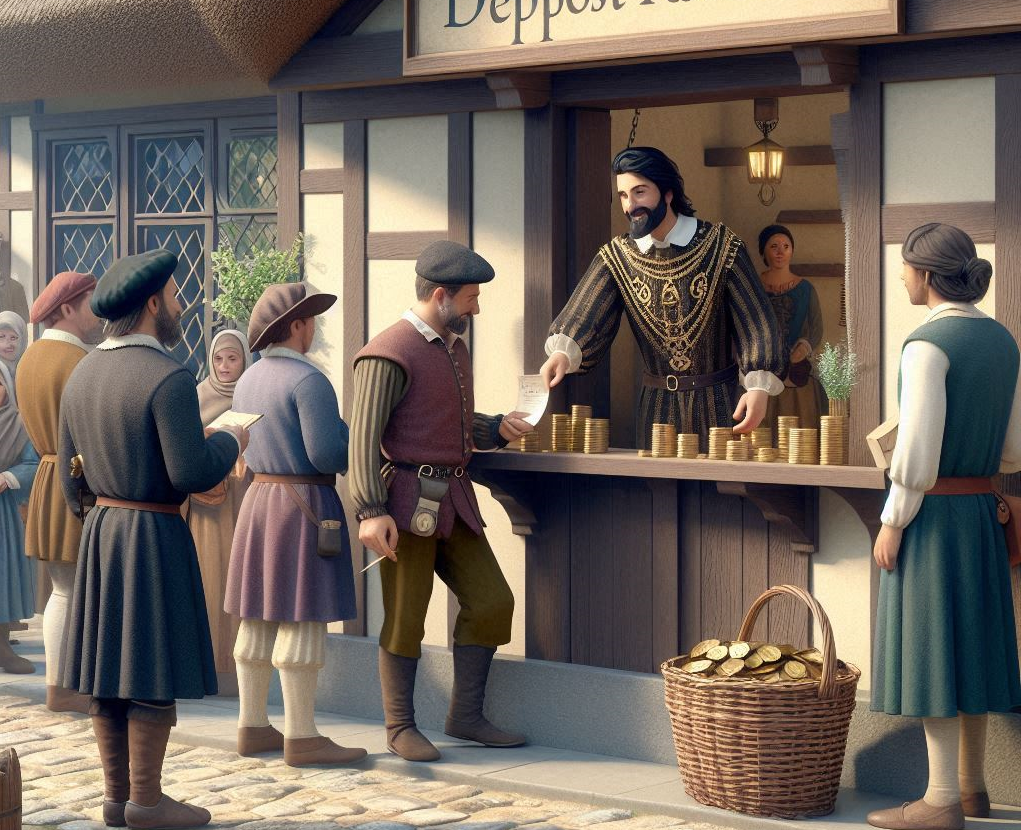The history of banking dates back thousands of years, from the earliest civilizations that began developing basic trading and lending systems to the sophisticated financial institutions and Fintech we know today. Throughout time, banks have played a crucial role in the global economy, facilitating the flow of money, asset management, savings, and credit. In this article, we will learn how the first financial institutions emerged and what functions they played in their respective societies.
What is banking?
A bank is a financial institution or organization that operates within a specific jurisdiction and complies with a set of regulatory requirements. Its purpose is to manage the financial resources of individuals, companies, and organizations through different financial products and services.
What was the first bank in the world?
It is estimated that around the year 2000 BC, the first transactions with banking entities were carried out, specifically in ancient Mesopotamia. Although they were already being used as accounting books, it was in the temples and palaces of this ancient civilization where the first economic societies began to operate. The first bankers were priests who managed deposits of grain, livestock, and precious metals for third parties.
However, the first bank in the world to be created as a financial organization or institution was founded in the year 1472 in Siena, Italy. This organization, known as the Banca Monte dei Paschi di Siena, is still operating today, making it not only the first bank created in the world but also the oldest bank that still maintains its active financial operations.

Key stages in the history of banking
Below is a summary of the key stages in the history of banking:
Antique
As we mentioned earlier, banking has its roots in early civilizations such as Mesopotamia, where temples and palaces played a key role in the economy. In Babylon, around 2000 BC, temples also acted as lenders.
Greece and Rome
In ancient Greece, banks began lending money at interest and managing deposits. Greek bankers (trapezites) were key figures in the commerce of the time. Rome followed suit, with more sophisticated banking, offering loans, currency exchange and deposit services. Importantly, the Roman “argentarii” performed banking functions similar to those of today’s banks.
Middle Ages
During the Middle Ages, international trade grew and with it the demand for banking services increased. At that time, the Catholic Church prohibited charging interest (usury), which limited the development of banking in Europe. However, some Italian city-states, such as Florence and Venice, saw the birth of important banking families, such as the Medici. Italian bankers developed accounting systems and bills of exchange that facilitated long-distance trade.
Renaissance
During the Renaissance, international trade flourished, and with it banking institutions. Families such as the Fuggers in Germany and the Rothschilds in Europe played “key” roles in financing kings, nobles, and commercial enterprises. At this time, private banking houses grew in importance, offering not only loans but also the first financial instruments such as bonds and bills of exchange.
17th and 18th century
During the 17th and 18th centuries, banks began to play a more formal role in countries’ economies. For example, the Bank of England was founded in 1694, one of the first central banks, which became a model for other countries. The concept of the “commercial bank” also developed during this period, with financial institutions offering lending, savings, and fund management services to individuals and businesses.
19th century
In the 19th century, the Industrial Revolution spurred increased demand for capital, causing commercial and investment banks to expand rapidly. New banks sprang up in Europe and America, supporting the financing of large infrastructure projects such as large buildings, railways, mines, and factories. Banks began to issue banknotes (paper money) and manage national monetary systems.
20th century
The 20th century saw the rise of multinational banks and the globalization of financial services. Modern central banks, such as the US Federal Reserve in 1913, were created to regulate money and credit. Following the Great Depression of 1929, stricter regulations were implemented to prevent future banking crises. However, banks also became key players in financing wars and managing public debt.
Why is banking important?
Banking is necessary in an advanced society, as it offers a variety of financial services that allow for optimizing asset management and improving the quality of life of people/companies. Through banking, different operations can currently be carried out, among the most popular are transfers/payments, loans, currency exchange, asset safekeeping, and financial advice, among others.
What do you think about this topic? Do you want to know more about Pilsenga’s business banking service?
If you are interested in Pilsenga products or services, you can contact us by visiting the following link.